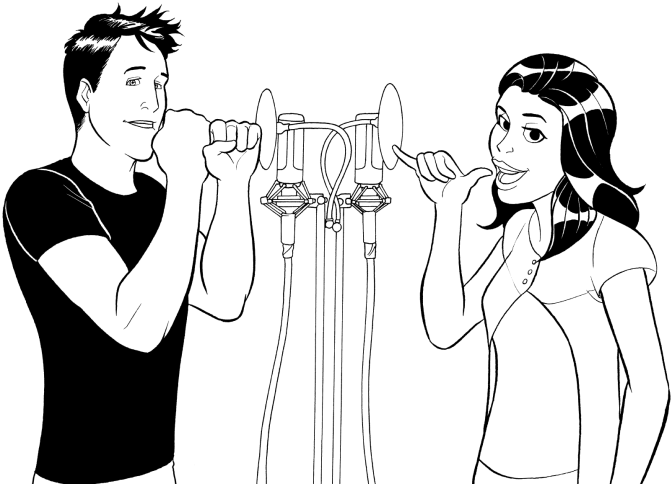Making Bold Choices in Voice Over
 Bold choices is a catch-all phrase when it comes to acting. They make such bold choices. You need to make bolder choices. I loved his bold choice. So then the question is: How do I make those kinds of choices?
Bold choices is a catch-all phrase when it comes to acting. They make such bold choices. You need to make bolder choices. I loved his bold choice. So then the question is: How do I make those kinds of choices?
What constitutes a bold choice? Well, it all relates to how well you know your personal boundaries and how comfortable you are exploring them.
A common misconception among actors is that to make a bold choice is to do something crazy or intentionally weird. Freaking out in an audition situation or reciting all your lines in a high pitched whine would be a bold choice, to be sure. But would you rather be a story that casting directors tell at parties, or would you rather have them call you in again because you stood apart from the rest – as a pro? Making a bold choice relates more to being committed, specific, and imaginative in your approach to the character in the scene.
One way to make a bold choice could be to find the thing that makes the character personal to you and play that, regardless of what you feel would be the right way (the way that you assume that they want it). Remembering that there is never really a right way to do it can be so freeing. Sometimes the clients/director don’t even know exactly what they are looking for ‘til they hear it. And the only way you can really set yourself apart from the rest of the actors who are also vying for the part is to be true to who you are; because there’s only one of you. As soon as you start trying to imagine what they want, you’ll only trip yourself up.
Another way of making a bold choice might be to take a specific quality or idea and fully explore it in such a way that you make it real, no matter how outlandish and off-the-wall the idea is. Sure, you may decide that the character is suffering from an extreme bout of the hiccups, but you’d better know exactly what caused it, how long it’s been going on, how it’s affecting the other characters or environment and how the character feels about it; otherwise it’s just an affectation that will detract from the scene.
People love relating to things that are part of the human condition, things they can identify with; so sometimes making a bold choice simply means finding a creative and fun way to explore the humanity of your character.
+++++++++++++++++++++++++++++++++++++++++++++++++++++++++++++++++++
Check out our VoiceOverVoiceActor website for more tips and exercises. We post daily VO tips on Facebook and Twitter, and our book, Voice Over Voice Actor: What it’s like behind the mic includes a wealth of exercises to build your voice and keep it ready for a successful voice over career!

